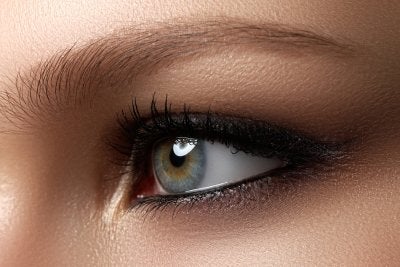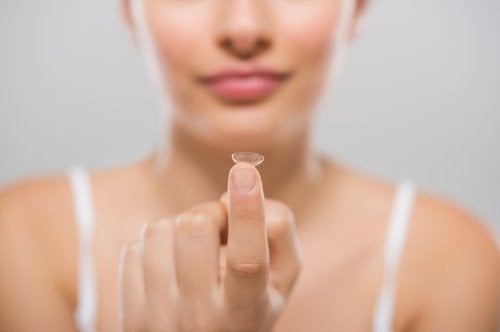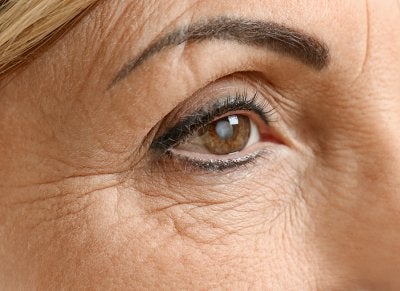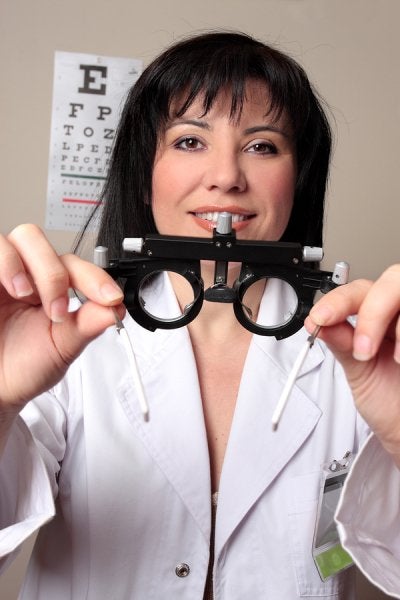-
Cataracts 101
Cataracts are an eye condition that typically causes blurry, dim, or cloudy vision. If your ophthalmologist has diagnosed you with this disease and recommended that you consider getting intraocular implants through cataract surgery near Chicago , then watch this video to understand the basics of this condition.
Cataracts are a common eye problem that affects millions of individuals as they age, and it develops when a person’s eye lens, which is normally clear, becomes cloudy. This condition is typically the result of age-related changes that affect the eye and is seen most commonly in individuals over age 60. This condition cannot be reversed, but an ophthalmologist can remove cataracts and restore vision in most cases.
-
Summertime Eye Safety Tips
Regular visits to your ophthalmologist in Chicago can help you protect your vision and eye health. However, no one wants to see an eye doctor because of an injury. To help keep your eyes protected from harm this season, read on for some helpful summertime eye safety tips.

Wear Goggles
Summer equals swim season, and many people spend hours at a time in the pool while exercising, playing, or relaxing. However, chlorine can affect the health of your eyes, so you can benefit from protecting them from the chemicals in pool water. To avoid blurry vision and gritty-feeling eyes, wear goggles while you swim and rinse your eyes with fresh water afterward.
Carry Eyedrops
Hot and arid environments can affect your tear film and leave your eyes feeling dry and gritty. Because of this, if you’ll be spending time in a dry or windy location this summer, then you should take precautions against dry eye. You can do this by carrying artificial tears and wearing wraparound sunglasses.
Prioritize Safety
Many eye injuries happen around the home, so you shouldn’t overlook the importance of eye safety as you work through that summertime to-do list. Whether you’re beginning a new DIY project or trimming trees, you can practice good eye care by wearing proper protective eyewear.
Wear Sunglasses
Did you know that your eyes are vulnerable to damage from the sun, just like your skin? Sometimes called “sunburn of the eye,” photokeratitis is a painful condition that can be caused by sunlight that bounces off highly reflective surfaces, such as sand and water. To help avoid the redness, pain, and blurry vision associated with photokeratitis, ophthalmologists recommend that you wear sunglasses with 100% UV protection and a wide-brimmed hat, if possible.
Quit Smoking
Quitting smoking can be a great addition to your list of summer health goals. Smoking is a risk factor for many health conditions, including some that affect the eyes, such as macular degeneration and cataracts. Reduce your risk of eye disease and other health issues by quitting smoking this season.
-
Tips for Avoiding Eye Injuries in the Workplace
Your eyesight is precious, but if you’re like many people, you probably take it for granted. You should know that thousands of American workers suffer from vision loss and blindness every year because of preventable eye injuries sustained in the workplace. As an employee, you have the right to work in a reasonably safe and healthy environment. Consider scheduling a visit to an optical center near Chicago. You can ask an ophthalmologist about the potential eye injury risks at your workplace. You’ll also get some easy-to-follow eye care safety tips to protect your vision.

Identify the Risks of Eye Injuries
A couple of the main causes of eye injuries are airborne particles and chemical exposure. Eye penetration can be caused by objects falling off scaffolds, sparks from welding equipment, and blown sawdust. Other objects may swing into a worker’s eye, such as chains, ropes, and tree limbs. Similarly, chemical eye burns can cause permanent damage, especially if the caustic chemical penetrates to the deeper layers of the eye. Chemical eye injuries can be caused by a variety of substances, including potassium, lye, magnesium, ammonia, sulfuric acid, hydrochloric acid, plaster, and cement.
Reduce Hazards in the Workplace
Identifying the potential causes of eye injuries at your jobsite is the first step toward protecting yourself and other employees. Next, talk to your employer about the safety precautions recommended by your ophthalmologist. Your employer may need to add machine guards, safety screens, and caution flags. High-risk jobsites should have an emergency eyewash station that is fully stocked with sterile eyewash solution. Employers have a responsibility to train each worker to follow safety precautions and to know how to respond when an eye injury does occur.
Wear Protective Eyewear
Protective eyewear can prevent most of all eye injuries that occur in the workplace, but only if it’s worn consistently. Every employee should have access to the appropriate eyewear for a task. These include goggles, face shields, welding helmets, and safety glasses with side shields. All personal protective equipment in the workplace must be OSHA-compliant.
-
How Intraocular Lenses Can Address Your Cataracts
Cataracts usually develop very slowly. These cloudy areas of the eye’s lens cause blurry vision, double vision, and sensitivity to light. When your symptoms start to interfere with your daily life, it’s time to visit a cataract surgeon near Chicago. During your cataract procedure, the cloudy lens will be removed and replaced with an intraocular lens (IOL). This lens is a flexible, synthetic lens that functions just like a natural, healthy lens would. It receives light and focuses it on the retina at the back of the eye. This allows your brain to receive images via the optic nerve.
Your cataract surgeon can walk you through the types of IOLs available to you. He or she might suggest an aspheric IOL, which mimics the natural variations in the curve of the eye’s lens. This could help you enjoy sharper vision. On the other hand, your ophthalmologist may recommend a toric IOL if you have nearsightedness, farsightedness, or astigmatism. This lets you see things clearly, without the blurriness that astigmatism causes.

-
What Patients Should Know About Cataract Surgery
Some people can’t even touch their eyeballs, so the prospect of cataract surgery near Chicago might seem a little scary at first. Do a little research about the process , and talk to your cataract surgeon so that you know what to expect. This can help you prepare, which can then make you more comfortable. You should know why cataract surgery is important, how to get yourself ready, and what you’ll experience when you meet with your eye doctor. Here’s a closer look at what patients should know about cataract surgery.

Reasons You Should Deal with Cataracts
Just like on a camera or a microscope, the lens of your eye helps you focus an image so that you can see it clearly. When you develop cataracts, however, the lens clouds up and becomes blurry. This can be distracting and takes away from your ability to appreciate a beautiful sight, so it may significantly impact your quality of life. There are steps you can take to gain your vision back, and your eye doctor may recommend cataract surgery. This procedure can restore clarity and color to your vision so you can enjoy life’s scenery the way you always have.
How to Prepare for Surgery
Before you get started with cataract surgery, your eye doctor will explain how intraocular lenses—or IOLs—work and what to expect when you go in for treatment. He or she will need to take measurements in order to create the right IOL, and you will need to tell your eye doctor about any medications that you’re currently taking. In some cases, you might have to refrain from taking these medications for a certain period of time.
What the Procedure Is Like
You might need to refrain from eating prior to cataract surgery. After numbing your eye, your doctor will carefully cut near the cornea to access the lens. The goal is to break down the cataract and replace the lens with an IOL. Your incisions should heal on their own, so you most likely won’t need stitches. After about a half hour in the recovery area, you can leave.
-
Keeping Your Eyes Safe Around Fireworks
Summer is the season for dazzling displays of fireworks, and the Fourth of July tends to be the pinnacle. If you want to be safe and keep your eye doctor in Chicago happy while you enjoy the view, be sure to practice proper eye care . Look at this video clip for tips on keeping your eyes safe around fireworks.
There’s a lot to love about the summertime, from days at the beach to ice cream cones in the backyard. For many families, it’s tradition to go out and see a fireworks show on the Fourth of July. Fireworks can be beautiful, but they’re equally bright. If the light gets to be too much, consider putting on a pair of sunglasses. You can also try to distance yourself from the spectacle to avoid such intense exposure. Whether you prefer sparklers, bottle rockets, or firecrackers, practice proper eye care.
-
The Patient’s Guide to IOLs
If you’re having trouble with your vision, your eye doctor in Chicago might recommend the use of intraocular lenses , or IOLs. These intraocular implants can help patients deal with certain types of eye diseases, and in doing so they can improve their happiness and comfort. There are a few different kinds of IOLs, and you can discuss the different types with your ophthalmologist to find out which might be right for you. However, they are typically all made of the same material. Read ahead for a quick look at the patient’s guide to IOLs.

When IOLs Are Appropriate
The human eye has many different parts, from the pupils that adjust to let different amounts of light in, to the retinas in the back of the eyes where the images land. When it comes to focusing and visual acuity, you rely primarily on your lenses. Unfortunately, many peoples’ lenses gradually lose strength over time. If you have severe cataracts, then your eye doctor may remove your lens entirely. In this case, the ophthalmologist may replace your original lens with an IOL, which is just an artificial replacement lens. By replacing your cataract lens with a clear new one, you can alleviate issues like blurriness and dulled colors.
Types of IOLs
When you talk to your eye doctor about the possibility of an IOL, you will find that there are quite a few different kinds. A monofocal IOL tends to be the go-to choice after cataract surgery. People typically use these IOLs for distance and wear eye glasses for reading. Toric IOLs are helpful for those with astigmatism, and multifocal IOLs handle both distance and close-up vision. You can also talk to your eye doctor about accommodative IOLs, which can actually change shape after being placed.
What IOLs are Made of
Although there are different kinds of IOLs that you can use after cataract surgery, most of them are made of acrylic or silicone. Additionally, intraocular lenses may help protect your eyes from overexposure to ultraviolet rays. This can prevent additional damage to your eye health in the future.
-
Protecting Your Eyes from UV Rays
The light that we get from the sun comes in the form of ultraviolet, or UV, rays. While the first sunny day of spring might improve your mood, exposure to these rays comes with implications for your eye care near Chicago. Talk to your eye doctor about how to keep your eyes healthy , and watch this video on protecting your eyes from UV rays.
Overexposure to UV rays can fade your carpets and furniture, burn your skin, and even damage your eyes. This is why you should do your best to protect yourself from overexposure when you spend time in the sun. Sunglasses can be effective, but you should choose a pair that blocks 100% of both UVA and UVB rays, so be sure to check the label. It’s also a good idea to wear a hat for extra protection. Keep in mind that UV rays can even damage your eyes on cloudy days.
-
May is Healthy Vision Month
Although you should practice proper eye care every day, May happens to be Healthy Vision Month. The purpose of this campaign is to raise awareness about the importance of eye health and teach people how they can keep their vision sharp for the rest of their lives. In order to stay on top of your eye health, you should know a little bit about your family history and what you might be susceptible to. Do your best to protect your vision when you’re out and about, and see your eye doctor in Chicago for routine checkups. May is Healthy Vision Month, so continue reading to learn about the principles it focuses on.

Know Your Family History
You are who you are thanks to nature and nurture, and both of these constructs play a role in your eyesight as well. Some of the traits that make you who you are will have been passed down through your bloodline. For this reason, it’s a good idea to know what kinds of health issues run in your family. Just like heart disease and bipolar disorder, eye conditions can be hereditary. Celebrate Healthy Vision Month by learning about your family’s eye health.
Protect Your Eyes
Your eye doctor wants the best for your eyes, but you need to do your part to keep your vision sharp. Overexposure to ultraviolet rays can have a negative impact on your vision and even lead to eye health issues. When you go outside, be sure to wear sunglasses that block out ultraviolet rays. It’s also a good idea to stay in the shade, and you can even wear a hat for extra coverage. The better you protect your eyes, the happier your eye doctor will be during your next visit.
See Your Eye Doctor
Proper eye health is a team effort, so you can’t handle it alone. Your ophthalmologist knows what’s best for your eyes, and he or she can screen you for diseases that you might not catch yourself. If you haven’t seen your eye doctor lately, take the opportunity to make an appointment during Healthy Vision Month.
-
Eye Protection for Tennis Players
If you play tennis or plan to learn how, it’s time to schedule an appointment with an ophthalmologist. At an optical center in Chicago, you can learn about the specific risks associated with tennis, including eye injuries that may cause vision loss. Your ophthalmologist can recommend protective eyewear specifically for tennis. He or she will ensure that your eyewear fits you properly for maximum protection.
For more tips on eye care and injury prevention, watch this video. The eye doctor featured here explains that the polycarbonate lenses found in protective eyewear can block projectiles such as tennis balls, even when these objects are traveling at up to 90 miles per hour. She also discusses the importance of ultraviolet (UV) protection to guard against cataracts, lesions, and tumors.
